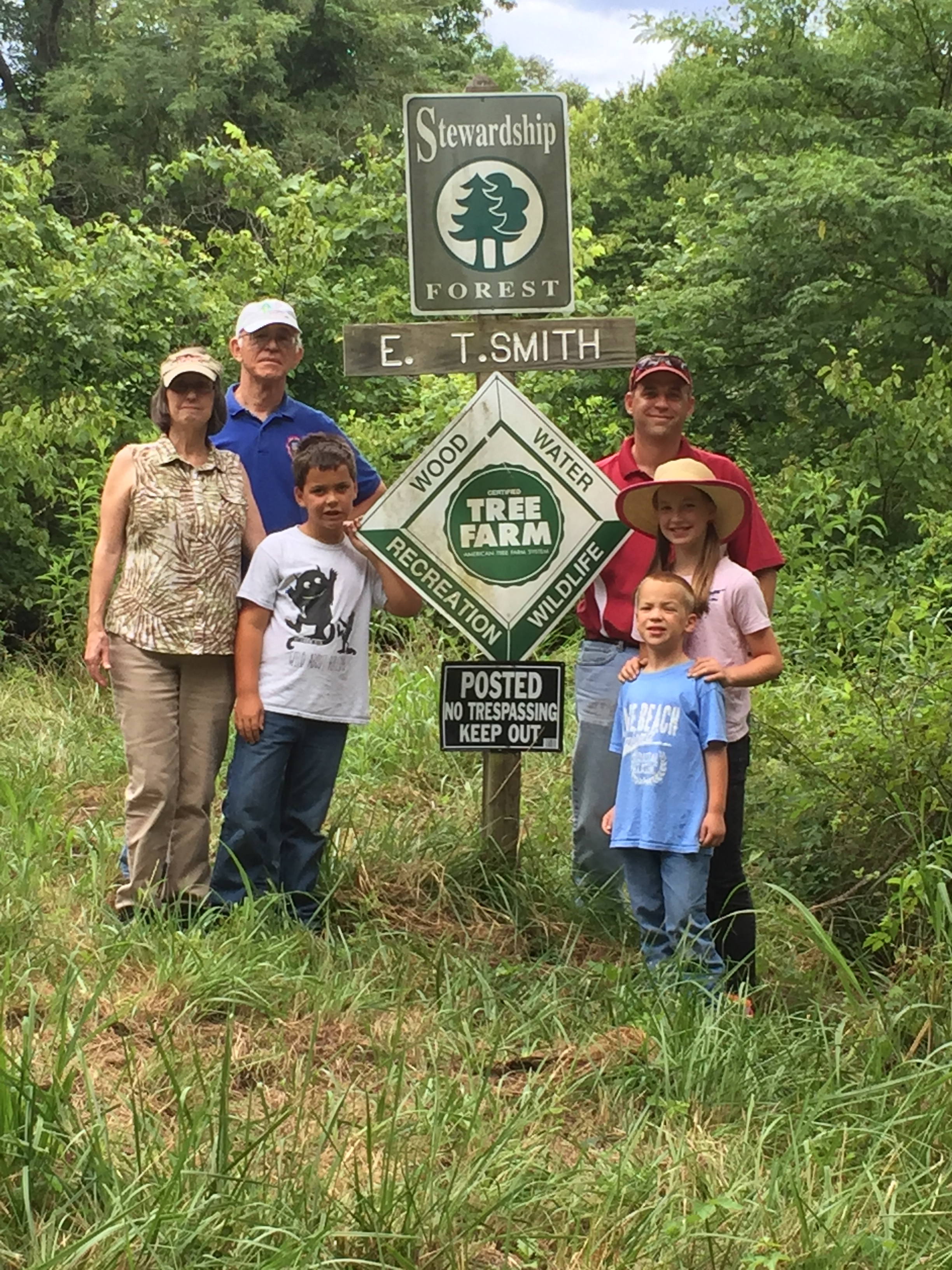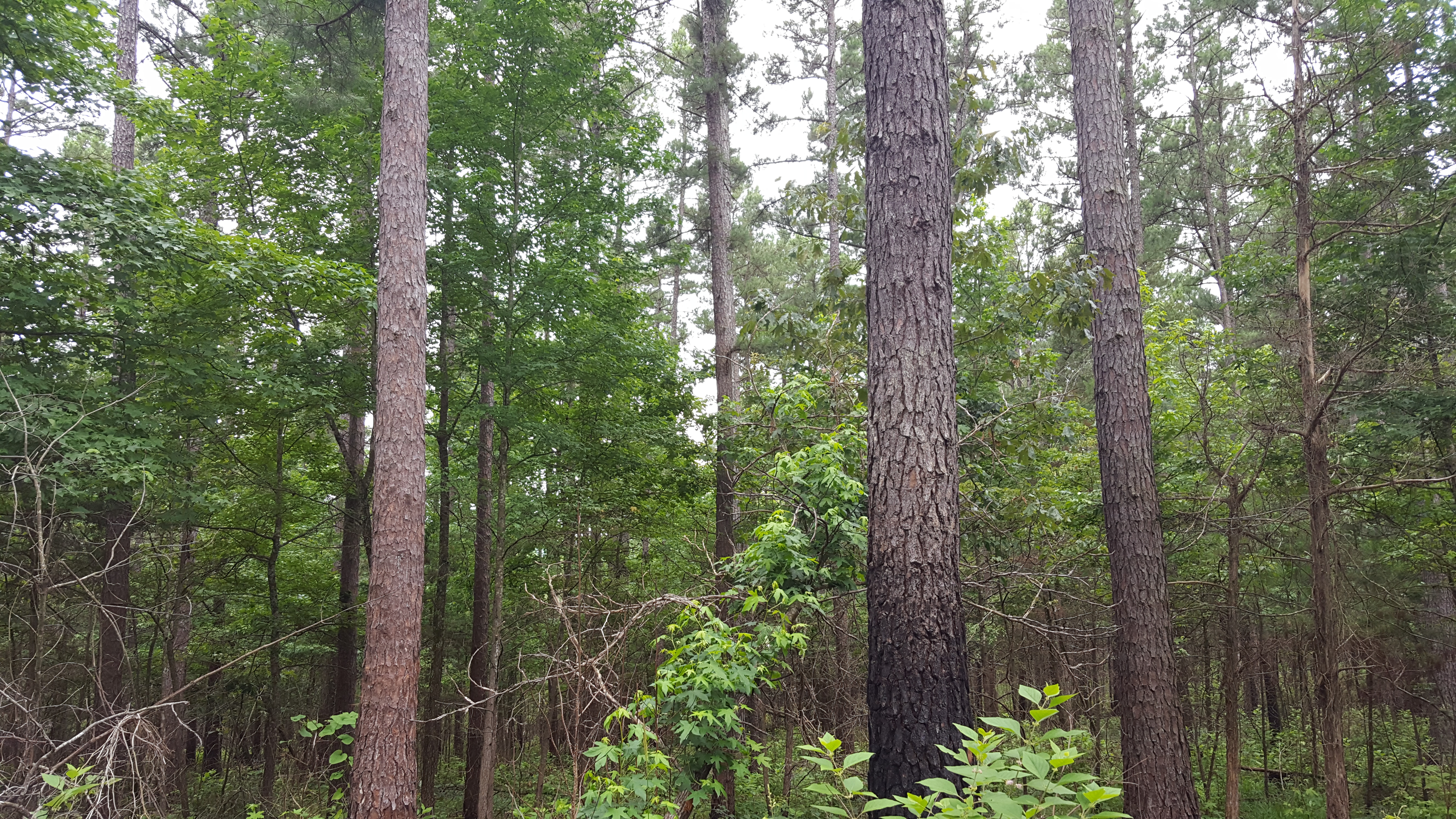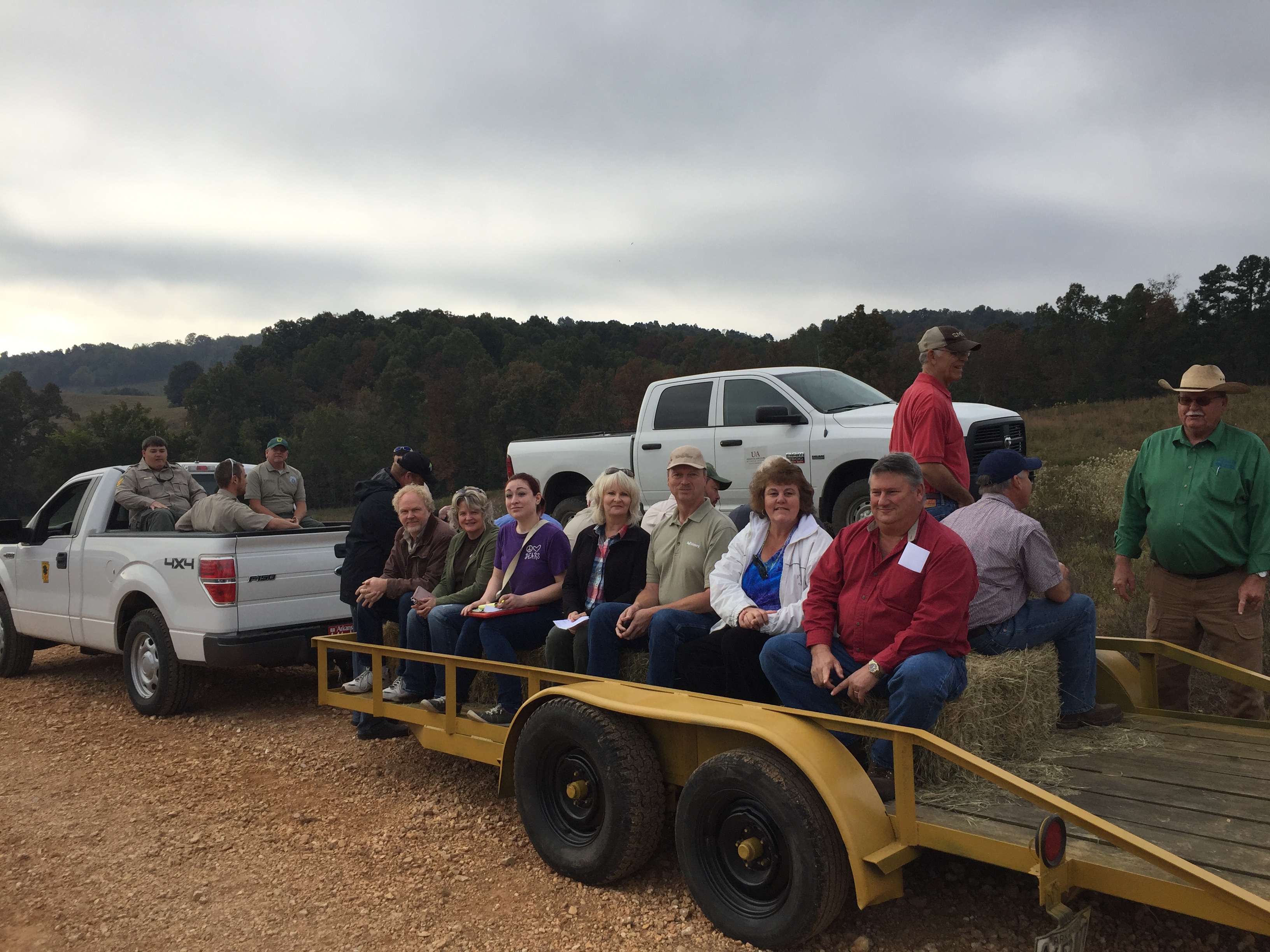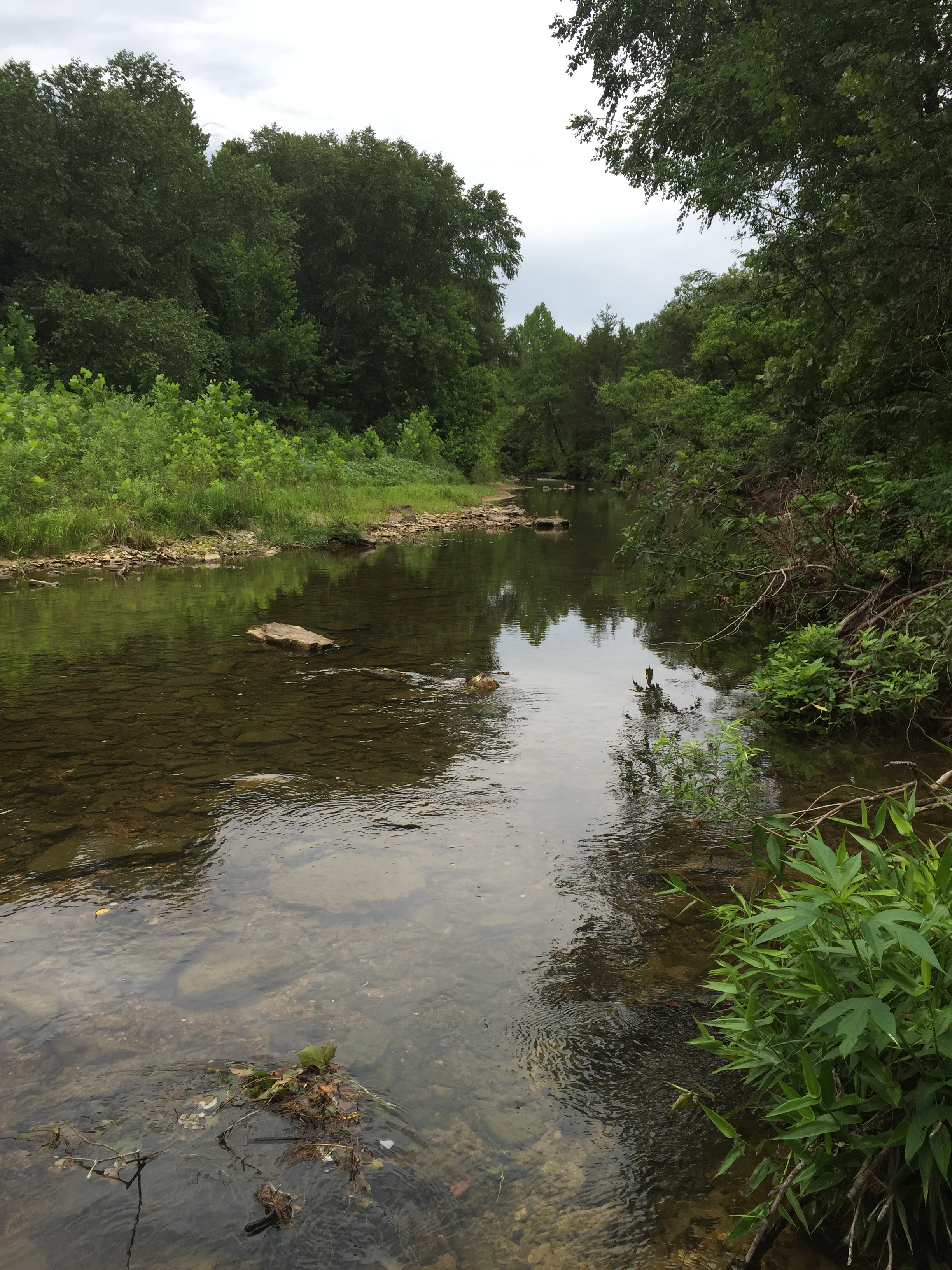Earl T. Smith Family from Arkansas
 What Makes Them Outstanding?
What Makes Them Outstanding?
The Smith Family Tree Farm has been a labor of love for over 100 years. The land started as a cattle farm and evolved through the years to a diverse timber property that is well-loved and utilized by all of the family. Currently three generations of Smith's manage, hunt, fish, hike and experience nature on this family legacy.
Mr. Smith has a history of trying to do what is the best for his property over the years with using sound forestry management practices for his timbered areas and following the Best Management Practices for his property and streams to meet his management long term goals. He has taught his children and grandchildren the importance of these practices, as well. He has used many different forestry management techniques such as thinning the natural Pinestands, clearcut some areas then had site prep burning, and then plant Pine back to reforest the stand with higher genetic quality Pine trees and planted hardwoods in certain areas of his property. Established roadside aesthetic buffers adjacent to clearcuts, has completed Forest Stand Improvements by thinning Sweetgum and Elm from his natural Pine stands, has established many miles of fire lines and added BMP’s to stay within guidelines, done prescribed fires, mowed and disked for wildlife and established food plots on his property. Having interest and engagement from the entirety of the family helps to ensure that this timberland will remain in the family for many generations to come.
“Due to the diversity of the timber on the property and the conviction to sustainable forestry that the Smith Family holds, I believe that the Earl T Smith Family is an ideal candidate for this award,” stated Kenny Smothers, forester with Arkansas Forestry Commission.
Tree Farmer Story
The Earl T Smith Family tree farm is located in Izard County of North Central Arkansas. The tract is quite diverse in topography, geology (ranging from very rocky areas to sandy areas) and a mixture of hardwoods and pines. The land has been in family ownership for generations (some areas for well over 100 years). Family members are fortunate in that past generations consolidated land holdings and left the land “better than they found it”. They also left a work and stewardship ethic to follow. The debt which we owe was expressed quite eloquently by the 2016 Arkansas Outstanding Logger, Lathan Erwin, when he said that “we are drinking from a well we didn’t dig.”Timber has always been a vital element in the farm and family, in the past, much of the land was purchased from timber harvest. My grandfather on my mother’s side spent his life working in the forests of South Arkansas.
There has also been a transition in the operation of the farm. This transition began from a farm that was primarily crops to mostly a cattle farm, then a transition with timber being increasingly important. This transition advanced over three generations. The need for more intensive timber management became evident when we were deciding how to proceed with a mature shortleaf pine stand that had been hand planted by my Grandfather, Father and myself. After contacting the Arkansas Forestry Commission we were advised to develop a plan for harvest and replanting of the area. We were also informed that resources were available to develop that plan. Subsequently, we contacted with Brent Foust of Foust Forestry Management who developed the initial plan and supervised the harvest. This began our development of a team of professionals to give us recommendations and help with implementation. We have worked extensively with the Arkansas Forestry Commission, NRCS, Arkansas Game and Fish Commission and the UofA Cooperative Extension Service inidentifying cost shared programs. Not having a professional team that shares your values will cost you in the long run.
supervised the harvest. This began our development of a team of professionals to give us recommendations and help with implementation. We have worked extensively with the Arkansas Forestry Commission, NRCS, Arkansas Game and Fish Commission and the UofA Cooperative Extension Service inidentifying cost shared programs. Not having a professional team that shares your values will cost you in the long run.
The topography of the area presented challenges in both planning and in implementing the plan. It was apparent that on such a diverse tract that a variety of species would be required in order to optimize each area for maximum timber production. Getting access to remote areas was identified as a problem but the construction of access roads and fire lanes had to include erosion control measures such as water bars in order that they could be maintained. These practices are also necessary in order to address water quality concerns.As the Tree farming community knows, income is important but certainly not the only consideration. The preservation of the land and providing for wildlife are equally important features of our plan. We have found that most forestry best management practices benefit both timber production and provide wildlife benefits. Following best management practices during harvest and setting aside streamside management zones were vital elements in our management plan. Prescribed burns are utilized for control of undesirable species and wildlife improvement. Maintaining cash flow for the tree farm operation is a problem as we do not harvest every year. This has been eased by leasing to a hunting club and participating in program such as the USDA Conservation Stewardship program.
 Another short lived program that provided income was the contracting for the sale of carbon credits. In February 2008, a tornado passed over our land damaging approximately 174 acres. The damage in some areas was extensive. After calling our forester, Brent Foust, who assessed the damage and advised we contact the Kenneth Smothers of the Arkansas Forestry Commission for assistance. The subsequent salvage, cleanup and reforestation efforts were completed only because of the work by our team. The Arkansas Forestry Association provided information on assistance available from state and federal agencies. The NRCS EQIP program has been utilized several times to help in completion of projects. The Izard County USDA personnel have been helpful in identifying cost sharing programs. It is critical that you identify programs that fit your needs and your plans, not all of them will meet your needs. Also important is that you have a clear understanding of what the program requires of the landowner. Such requirements may not fit in the management plan. Future projects include conversion of remaining pastures to timber and finding a solution to the problem of feral hogs.
Another short lived program that provided income was the contracting for the sale of carbon credits. In February 2008, a tornado passed over our land damaging approximately 174 acres. The damage in some areas was extensive. After calling our forester, Brent Foust, who assessed the damage and advised we contact the Kenneth Smothers of the Arkansas Forestry Commission for assistance. The subsequent salvage, cleanup and reforestation efforts were completed only because of the work by our team. The Arkansas Forestry Association provided information on assistance available from state and federal agencies. The NRCS EQIP program has been utilized several times to help in completion of projects. The Izard County USDA personnel have been helpful in identifying cost sharing programs. It is critical that you identify programs that fit your needs and your plans, not all of them will meet your needs. Also important is that you have a clear understanding of what the program requires of the landowner. Such requirements may not fit in the management plan. Future projects include conversion of remaining pastures to timber and finding a solution to the problem of feral hogs.
Wood
The Smith family has 1824 certified acres, 1788 wooded acres, he manages using thinning of natural pine stands and final harvests on some areas. He has used herbicides in accordance with labeled practices and has used mechanical site prep, site prep burns to prepare for planting. He has reforested using improved pine seedling (Loblolly and Shortleaf Pine) using the appropriate species for the site. His hardwood reforestation efforts promote diversity in the species composition on some of his timber stands. He has prescribed burning of some of the pine stands to control the hardwood competition and reduce the excess litter on the forest floor to reduce the risk of wildfire on his property. Areas that were harvest cut along the main gravel road used aesthetic buffers to reduce the visual impact of the view from the gravel road. He uses forest stand improvement to release the pine trees from the undesirable species (sweetgum and elm) from his natural pine stands.
There are over 14 miles of fire lanes which were established and maintained over the years which are water bared and otherwise constructed so as to protect from sediment movement due to the topographical slope of the land. He has constructed BMP compliant access roads 2.6 miles across the property to aid with harvest operations and reforestation efforts. An area that was damage by a tornado was had a salvage harvest operation logging to remove down and broken timber. Following this the area was mechanically site prepared by bull dozing to pile logging slash and damaged trees. Herbicides were applied aerially and a slash piles were burned. Finally the area was hand planted with improved loblolly pine seedlings. He also reestablished roadside aesthetic buffer (existing aesthetic buffer was damage due to the tornado).
Water
The Smith Family Tree Farm has a perennial stream that consists of approximately 6 acres of water as well as intermittent streams. Streamside Management Zone were established on these in 2001 and constitute over 200 acres of the property. There are also scattered ponds that total approximately 4 acres in size. Best Management Practices are the primary consideration and ares trictly followed within any designated Streamside Management Zone on his property during any silvicultural operation.A cleared 12 acre former cattle grazing area along a stream bottom was reforested with cherrybark oak, shumard oak, white oak and bur oak on a 12 x 12 spacing in 2004. This not only protected the waterway but also enhanced wildlife habitat diversity.
water as well as intermittent streams. Streamside Management Zone were established on these in 2001 and constitute over 200 acres of the property. There are also scattered ponds that total approximately 4 acres in size. Best Management Practices are the primary consideration and ares trictly followed within any designated Streamside Management Zone on his property during any silvicultural operation.A cleared 12 acre former cattle grazing area along a stream bottom was reforested with cherrybark oak, shumard oak, white oak and bur oak on a 12 x 12 spacing in 2004. This not only protected the waterway but also enhanced wildlife habitat diversity.
Wildlife Including Threatened and Endangered Species
Mr. Smith and his family hunt and observe wildlife on the tree farm. He also leases the hunting rights on the property to a local hunting club. This activity has an added benefit of more “eyes” on the property who can be on the lookout for trespassing, storm damage insect outbreaks etc. Prescribed fire is used not only for silvicultural purposes but also to enhance wildlife habitat. The Smith family also uses practices such as disking and mowing to improve habitat for wildlife. There has also been an active program of fescue grass eradication, this grass is detrimental to most species of wildlife and was a holdover from the cattle grazing operation on the farm in the past. Mr. Smith has also established 2 acre of foot plots with clover and wildlife friendly lespedeza on the tree farm.
Earl, with help of the Arkansas Game and Fish Commission and the Arkansas Forestry Commission a site visit was conducted looking for any threatened and endangered species on his property, at the time he first applied for a Forest Stewardship Plan. Although none were found heand his Forester Brent Foust of Foust Forestry continue to monitor for threatened and endangered species on the property.
There is the Grey Bat and the Indiana Bat is on the Listed Endangered in Izard County and the Northern Long-eared Bat is on the Listed Threatened in Izard County. The Northern Long-eared Bat lives in trees and has been found in a nearby County. At this time none have been found on the tree farm but they are still of interest to the tree farmer.
Recreation and Aesthetics Including Special Sites
“Mr. Smith has many places of natural beauty on his property, I have not seen a piece of property in Arkansas with this much stand diversity from larger natural Pine saw logs to mixed Harwood stands, pine plantations, a beautiful perennial stream to a glade area all on one property.” Kenny Smothers Forester, Arkansas Forester Commission. The property has established trails for hiking, bird watching and the scenic views from the roads and hills across the property. A Best Management Practices compliant access road consisting of 6,600 ft. was constructed to provide access to Wolf Den Mountain, a scenic area. There is also the earlier mentioned wildlife habitat work as well as the hunting that takes placeon the tree farm.


